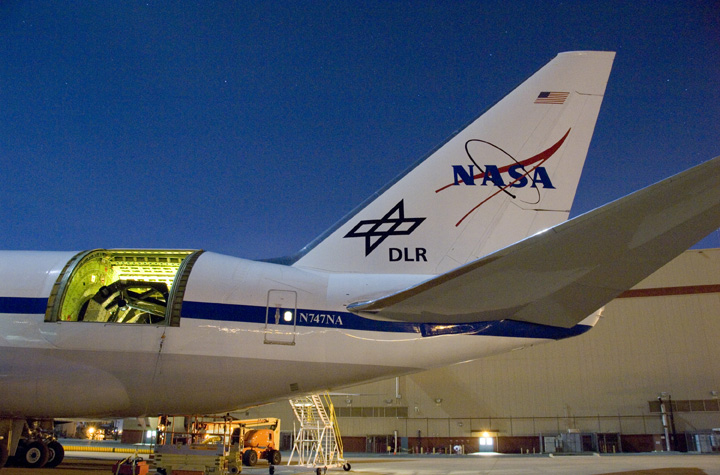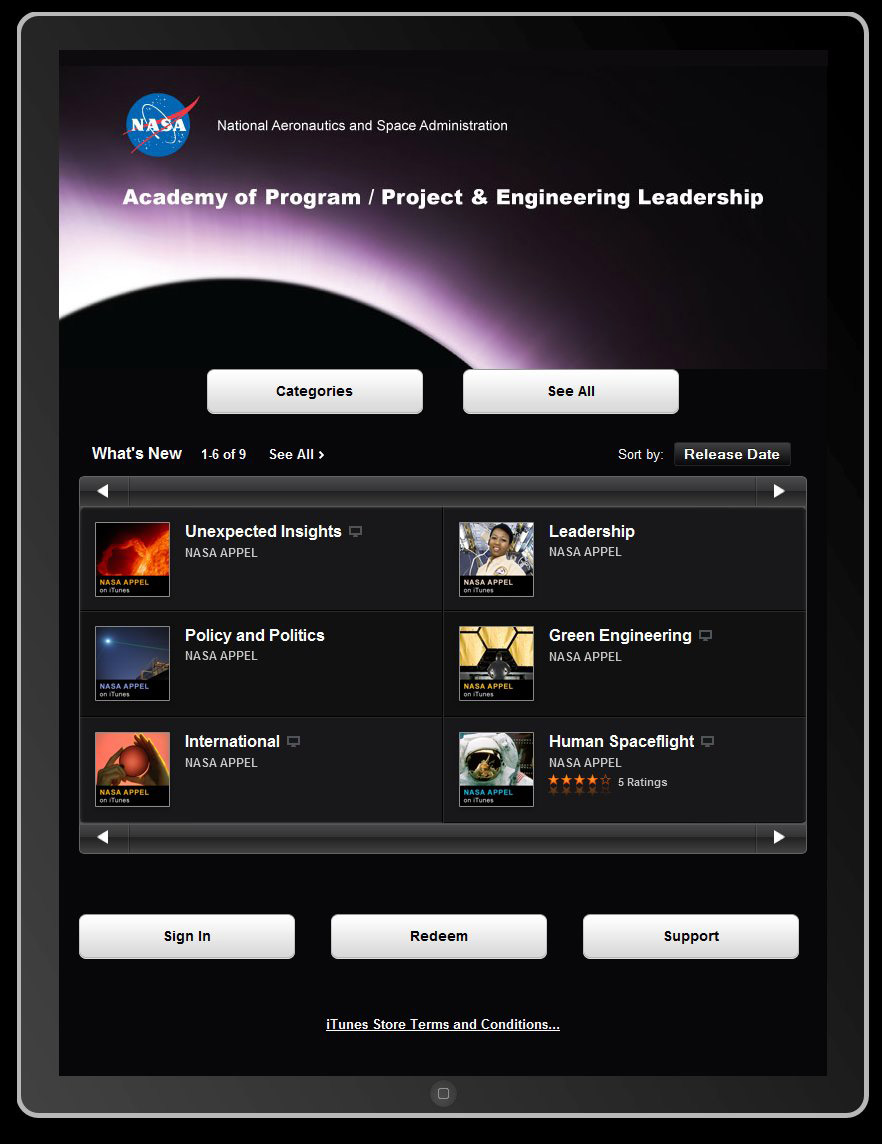
Surveyor 1's shadow against the lunar surface. Credit: NASA/JPL
June 14, 2011 Vol. 4, Issue 4
Forty-five years ago this month, scientists let out a sigh of relief when Surveyor 1 didn’t sink into the moon’s dusty surface.
Until Surveyor 1 landed on the moon, it was anyone’s best guess as to what the lunar surface was really like. In the mid-1950s, terrestrial telescopes couldn’t resolve objects smaller than the U.S. Capitol. All kidding about green cheese aside, the prominent conjectures about its properties ranged from a deep layer of lunar dust (possibly electrostatic that would engulf alien objects upon contact) covering a labyrinth of hidden crevasses to a meteoroid-battered surface resembling a World War I battlefield. If NASA wanted to land men on the moon, it needed to do some groundwork.
Surveyor: The Spacecraft
“Few space projects short of Apollo itself embodied the technological audacity of Surveyor,” wrote Edgar Cortright, former director at Langley Research Center, in Scouting the Moon. Problems cropped up early in the project. Technical problems caused the schedule to slip, cost to grow, and mass requirement to increase.
Formally approved in the spring of 1960, the Surveyor Program intended to investigate the lunar surface and to inform NASA engineers what they would encounter when landing a spacecraft and crew on the moon. The program would demonstrate the technology needed for landing on the lunar surface, inform the Apollo design, and add to the overall knowledge of the moon. Concurrently, the Ranger and Lunar Orbiter programs worked towards imaging and mapping the lunar surface to provide options for landing sites.
Surveyor was equipped with throttleable retrorockets to guide the nearly 2,200-pound spacecraft to the lunar surface. Surveyor 1 carried little in the way of scientific equipment, but had two television cameras, one of which was not used. Later Surveyor missions were designed to carry a single television camera and 350 pounds of scientific instruments. The spacecraft consisted of a triangular framework of aluminum tubes about ten feet high. Three honey-combed footpads supported the craft with a solar array and antenna.
The Jet Propulsion Laboratory oversaw the Surveyor spacecraft development, with Hughes Aircraft Company serving as the prime contractor. When cost, schedule, and mass challenges arose, JPL and Hughes reorganized their groups to improve the development and testing phases of the spacecraft.
“If we can pull this off, the American people have reason to be really proud, because this is no mean technical feat, believe me,” Surveyor Program Manager Benjamin Milwitzky told the New York Times.
Centaur: Surveyors Ride
Surveyor’s ride to the moon was the Atlas-Centaur rocket. The Centaur upper stage was the first hydrogen-fueled rocket in the world. Devised in 1956 by a General Dynamics engineer, the Centaur had its origins in a collaboration between the Advanced Research Projects Agency (ARPA) and the U.S. Air Force. NASA took ARPA’s place in the partnership in 1959, giving management of the project to Marshall Space Flight Center. But it turned out that Marshall, busy with the development of the Saturn rockets, was unable to give the Centaur program the attention it needed. NASA reassigned Centaur management to the Lewis Research Center (now Glenn Research Center) in 1962.
In addition to management troubles, the Centaur program had technical challenges as well: cracks in the liquid hydrogen fuel tank common bulkhead face sheet, unstable weather shield structure, and a dwindling payload weight capability. Abe Silverstein, the program manager at Lewis, did manage to turn things around, but at the expense of increasing the budget by nearly six times the original projection.
The Centaur, initially slated to carry a 2,500-pound payload, fell to 1,800 pounds. Silverstein and his group managed to get the payload weight up to 2,150 pounds, but the vehicle was still overweight.
Testing the Centaur included its share of successes, engine failures, and explosions. A fifth test of the AC rocket, which carried a Surveyor dynamic mass model, resulted in one of the biggest explosions ever seen on a Cape Canaveral launch pad. The pad had to be rebuilt, along with the development of another pad next to it, to meet the Surveyor Program’s schedule.
Lift-off and Landing
Surveyor 1 launched on May 31, 1966, beginning its three-day journey to the moon. No one knew if this first attempt would actually work. In a 1966 New York Times story about the launch, Clark Evert wrote, “It was, to follow Milwitzky’s analogy, like a first night for a symphony musicians who had a new director, had not rehearsed together, and did not know the acoustics of the hall.”
Six hundred pounds when it landed in the Ocean of Storms on June 2, 1966, Surveyor 1 started to send home images that would confirm that it was safe to land on the moon. The camera transmitted back images with a resolution of up to 2 millimeters. Cortright recalled the landing from the control room at JPL. “We sat up most of the night watching the first of the 11,240 pictures that Surveyor 1 was to transmit.”
Televised pictures of the spacecraft’s footpad depression put NASA at ease. The moon would not engulf NASA’s astronauts after all. These images, showing the barren, cratered, rocky surface of the moon we are familiar with today, also demonstrated that the lunar surface could support a larger spacecraft and crew.
Surveyor 1 operated until January 7, 1967. Two of the six Surveyor spacecraft that followed failed to reach the moon successfully. The remaining four carried cameras and scientific instruments to the lunar surface that informed the Apollo Program right up until the last transmission of the Surveyor 7 spacecraft in 1968.
Read Scouting the Moon by Edward Cortright.
Learn more about the Surveyor 1 spacecraft.
Surveyor 1’s shadow against the lunar surface.
Featured Photo Credit: NASA/JPL







